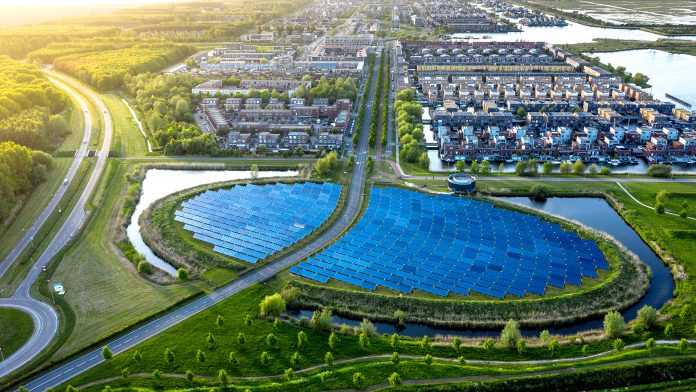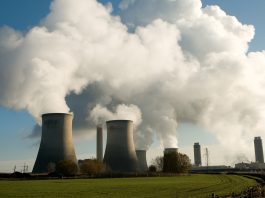Dirk Vansintjan, President of REScoop.eu, EUSEW digital ambassador, and Stavroula Pappa and Felix Kriedemann, Policy Advisors at REScoop.eu, discuss the EU’s second generation of legislation recognising the role energy communities play in different activities.
First versus second generation of EU legislation for energy communities
The EU’s Clean Energy for All Europeans Package (CEP, 2019) introduced provisions for ‘renewable energy communities’ (RECs) and ‘citizens energy communities’ (CECs) for the first time, empowering citizens to take ownership of renewables instead of exclusively depending on corporations.
While energy communities have come a long way since 2019, several barriers still exist, including issues with accessing the grid, lack of funding opportunities, and complex administrative and regulatory procedures.
As indicated by REScoop.eu’s Transposition Tracker, several Member States have made considerable progress in transposing these provisions into national legislation.
However, most Member States have yet to develop an enabling framework allowing communities to participate in the market without discrimination compared to other market actors.
Since the CEP, Europe has experienced a global pandemic, the biggest war at our door since WWII and an energy and related cost-of-living crisis that exposed our dependency on expensive fossil fuels.
Many European policymakers have worked hard to soften the blow of these crises. Among these solutions were the REPowerEU, the Fit for 55 Packages, and the Electricity Market Design revision. Crucially, though, these laws reinforced the model of energy communities, further acknowledging that citizens no longer need to depend on corporate power for their renewable electricity, heating, or renovations.
We can now collaborate and take part in the local energy transition.
What can energy communities do?
There is a common misconception that energy communities only develop renewable projects at the local level. Positively, the second-generation EU legislation clarifies that citizen-led initiatives actively contribute to other activities, including renovations, the alleviation of energy poverty, energy efficiency, offshore wind and heating and cooling.
Community Heating and Cooling (CH&C) initiatives, where citizens own their local renewable heating infrastructure, are emerging all over Europe.
In Belgium, the energy community Beauvent raised €1m from its members in 30 minutes. As a result, it now supplies citizen-owned renewable heat to the municipality, 500 citizens, 25 Small and Medium Enterprises, and two hospitals in Ostend. Similar projects are succeeding in Greece, Italy, Denmark, France, and the Netherlands.
The revised Renewable Directive recognises the role of energy communities in the development of larger projects to improve public acceptance of the transition. To this end, Member States may include RECs in cooperation projects on offshore renewable energy.
Belgium stands out as an example. In 2019, the Royal Decree on new offshore zones included citizen participation as one of the tender criteria.
By 2022, the government published a law that transposed provisions for RECs at the federal level, solidifying citizen involvement as a critical selection criterion for offshore wind projects. A minimum of 1% of the capital raised for the project should be open to citizens. The tender criteria will allocate 10% of the points to citizen participation, and the RECs are entitled to contract 25% of the energy through a citizen purchase power agreement (PPA).
This groundbreaking approach ensures that wind energy profits can benefit citizens, communities and small businesses directly.
The way forward: practice what you preach
Direct citizen ownership of renewable energy projects is essential for ensuring social acceptance and accelerating the transition. The potential of community energy is enormous – by 2050, around 45 % of renewable energy production in the EU could come from citizens.
Moving forward, the Commission needs to ensure complete and adequate transposition, implementation, and enforcement of EU rules to create robust regulatory and enabling frameworks that remove obstacles for citizens and level the playing field for communities in the energy market.
The next step could be developing an EU-level strategy for how different EU and national actions can support the development of energy communities across the various areas of EU policy.
We must now live by Jean Monnet’s words and make citizens work together to show them that beyond their differences and geographical boundaries lies a common interest.
Useful links
- A roadmap to developing policy and legal frameworks for energy communities https://energy-communities-repository.ec.europa.eu/roadmap-developing-policy-and-legal-frameworks-energy-communities_en
- REScoop.eu transposition guidance document https://www.rescoop.eu/toolbox/how-can-eu-member-states-support-energy-communities
- Energy sharing for energy communities – a reference guide https://energy-communities-repository.ec.europa.eu/energy-sharing-energy-communities-reference-guide_en
- REScoop.eu success story on offshore wind https://www.rescoop.eu/news-and-events/stories/december-success-story-offshore-wind-power-to-the-people
- REScoop.eu Community Heating and Cooling (CH&C) Guidelines: https://www.rescoop.eu/toolbox/guidelines-on-community-heating-and-cooling
- REScoop.eu Briefing for Municipalities and Social Housing Providers on CH&C: https://www.rescoop.eu/toolbox/its-better-when-were-together-briefing-for-municipalities-and-social-housing-providers-on-community-heating-and-cooling









